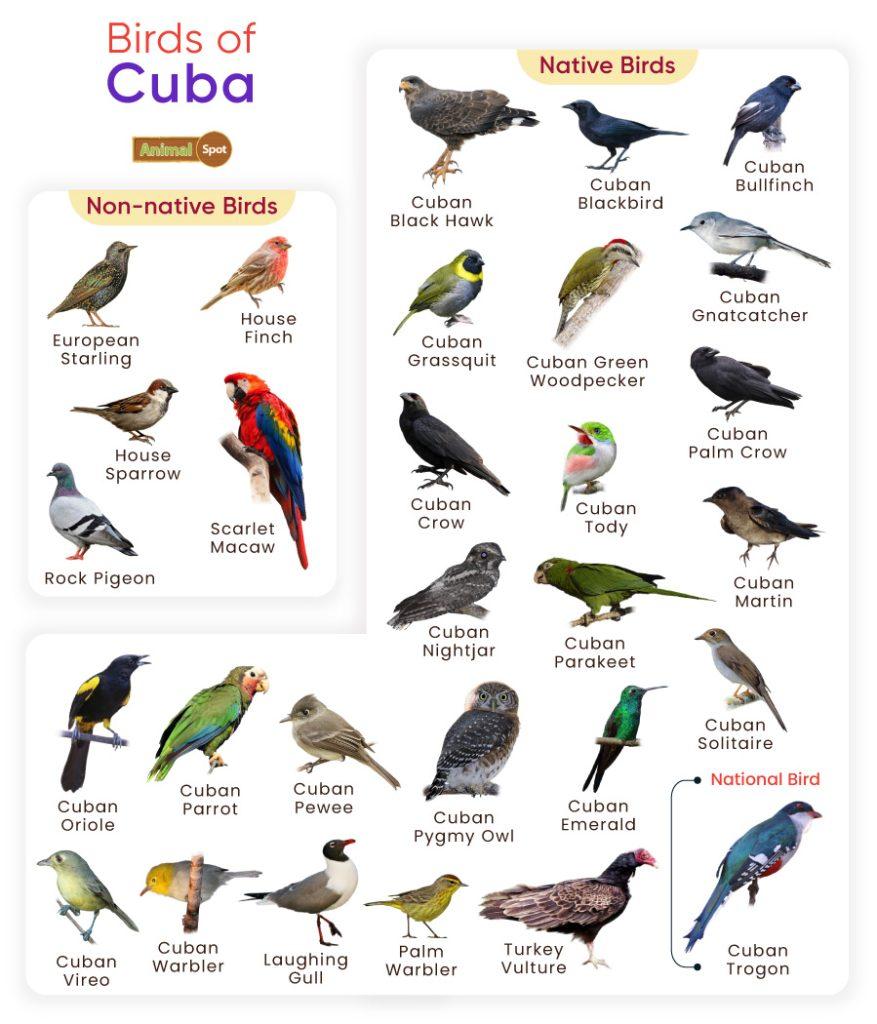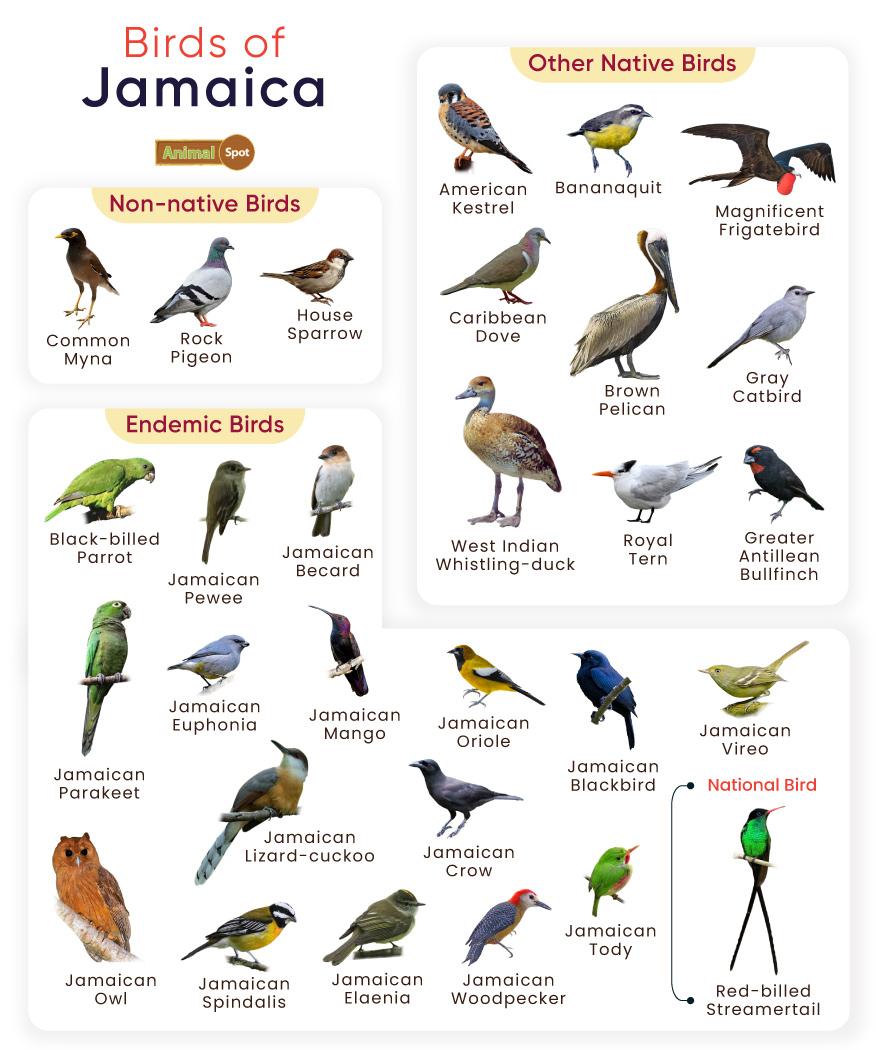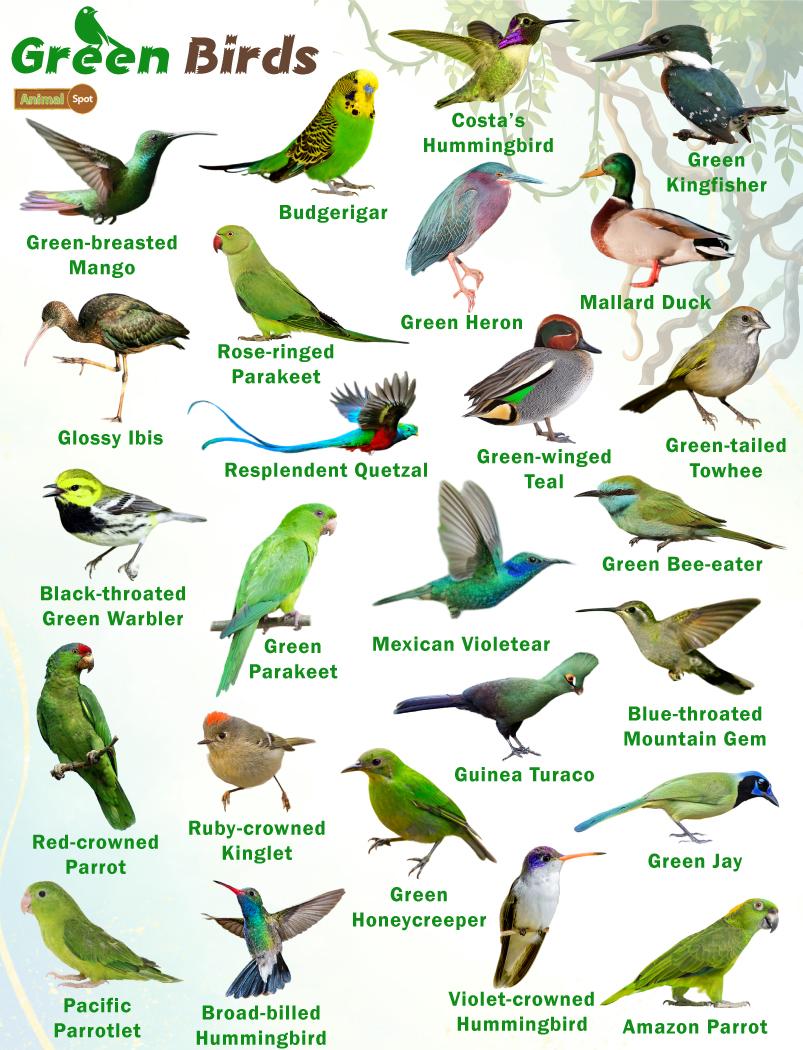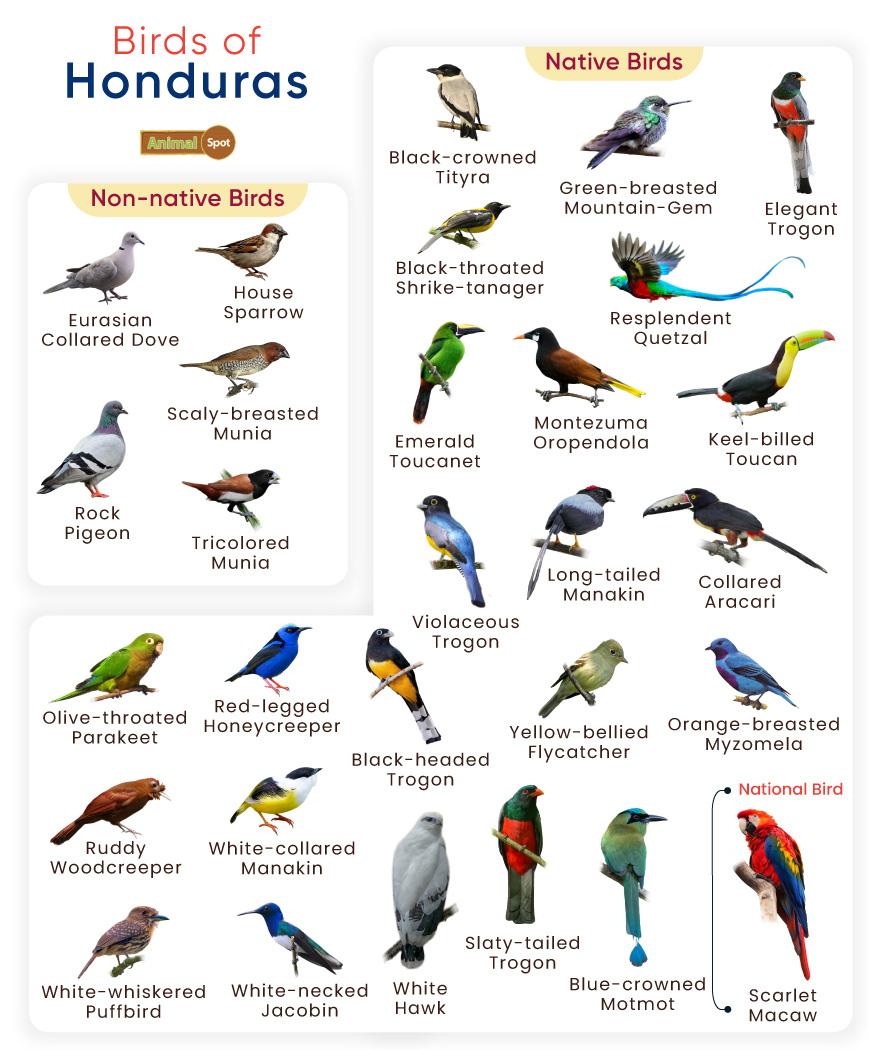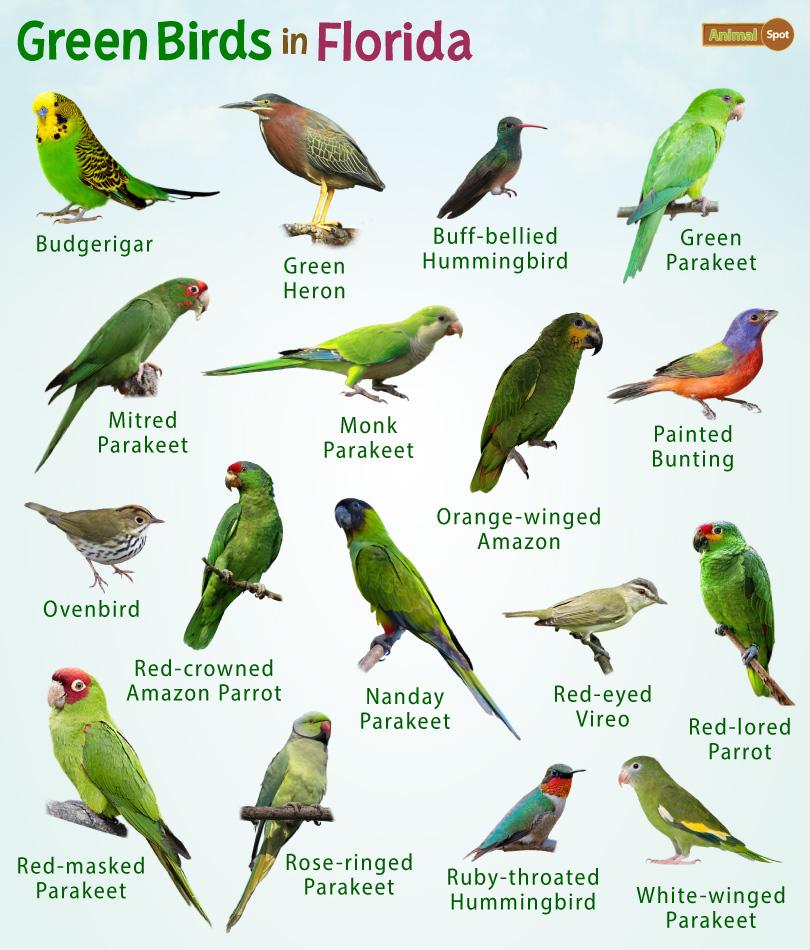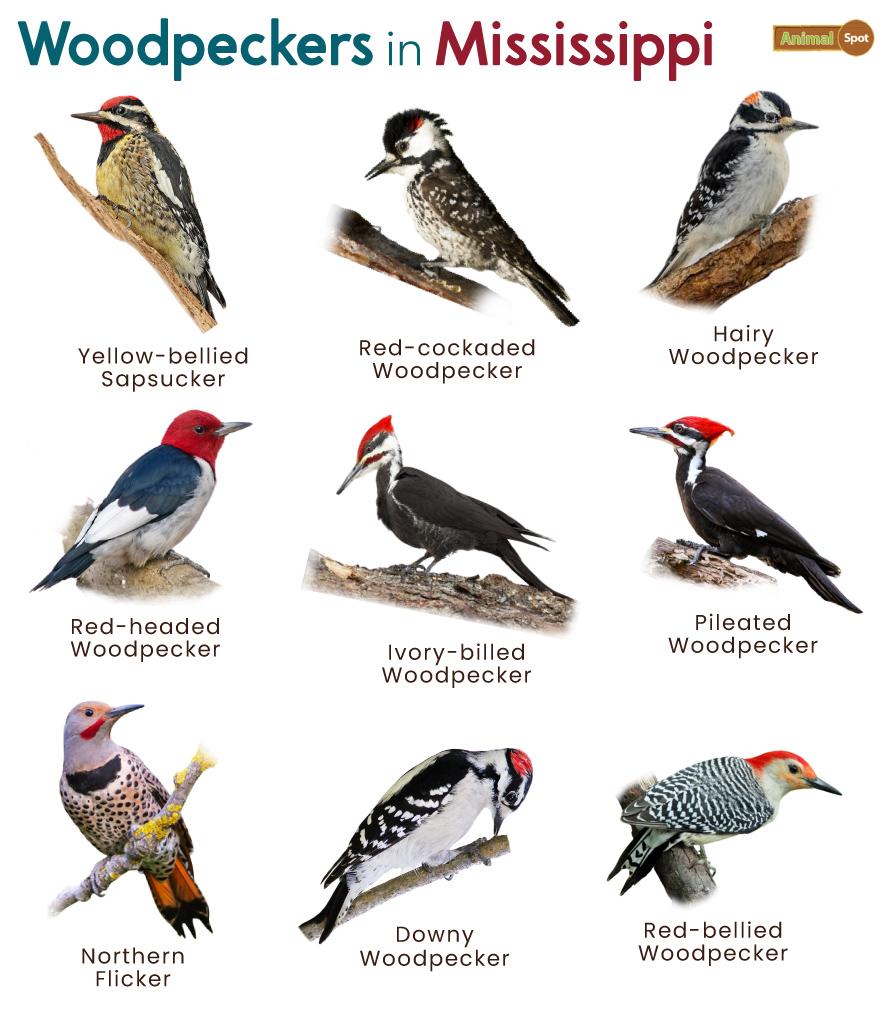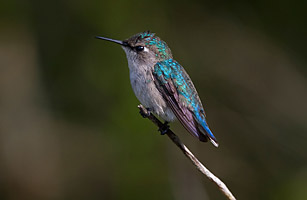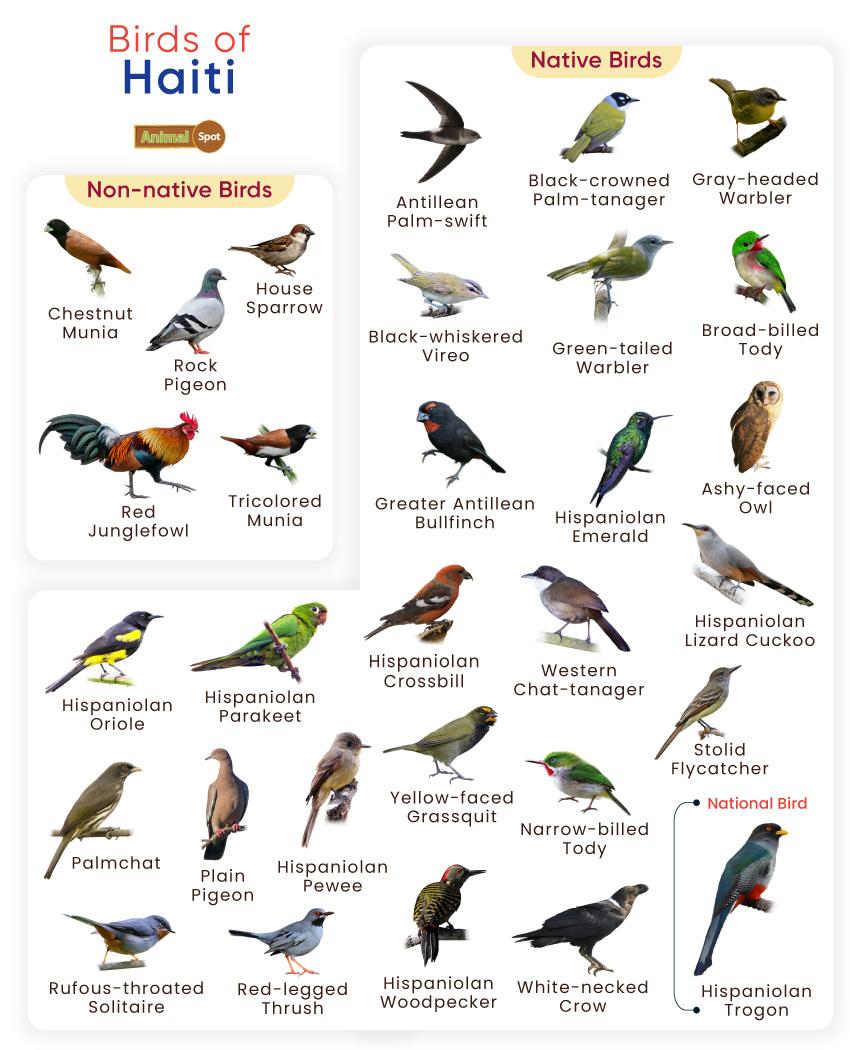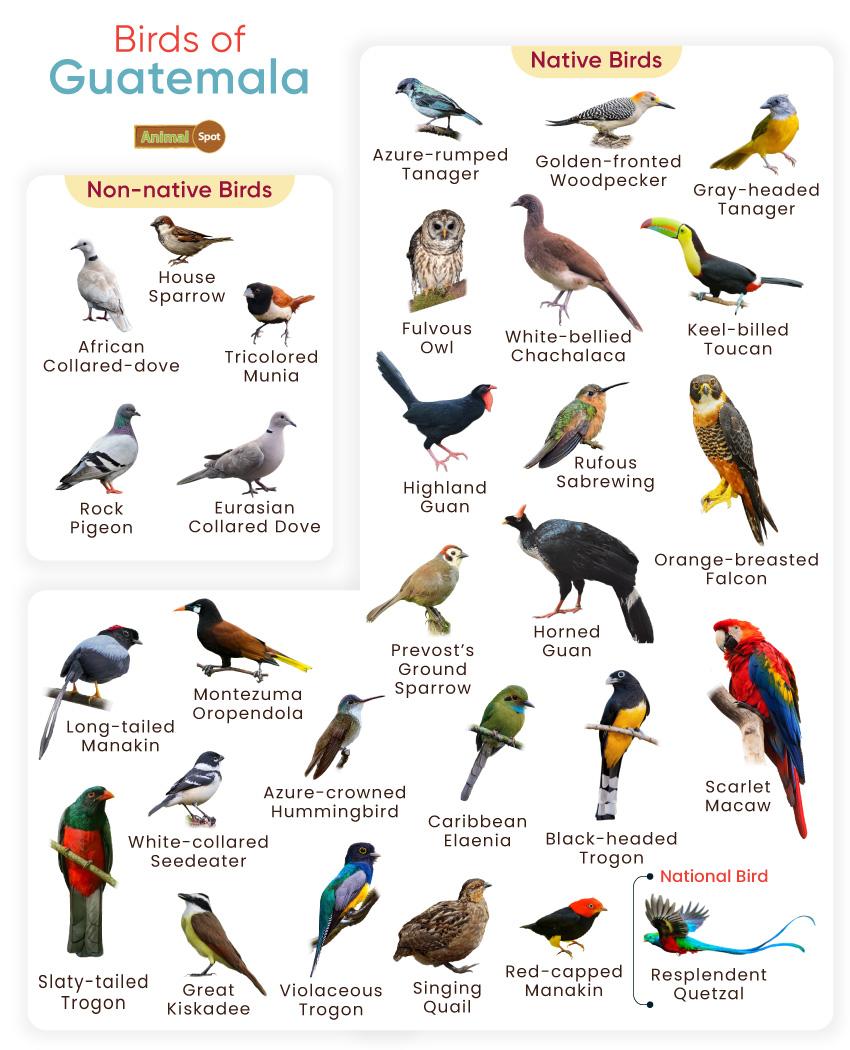Over 400 birds can be found in Cuba’s various habitats, like moist forests, dry forests, pine forests, wetlands, and mangroves. The avian species here have thrived thanks to the Cuban government’s dedication to conserving their biodiversity. Despite their efforts, certain species like the Cuban Macaw and the Ivory-billed Woodpecker have potentially gone extinct as their sightings have declined.
The national bird of Cuba is the Cuban Trogon. Other notable species include the smallest bird in the world, the Bee Hummingbird, and the beautiful endemic Cuban Tody.
List of Common Birds Found in Cuba
Native Birds
- American Kestrel
- American Redstar
- Bare-legged Owl
- Bee Hummingbird
- Blue-headed Quail-dove
- Brown Pelican
- Caribbean Flamingo
- Cattle Egret
- Cuban Amazon
- Cuban Blackbird
- Cuban Black Hawk
- Cuban Bullfinch
- Cuban Bunting
- Cuban Crow
- Cuban Emerald
- Cuban Flicker
- Cuban Gnatcatcher
- Cuban Grassquit
- Cuban Green Woodpecker
- Cuban Gull
- Cuban Kite
- Cuban Martin
- Cuban Nightingale-thrush
- Cuban Nightjar
- Cuban Oriole
- Cuban Palm Crow
- Cuban Palm Warbler
- Cuban Parakeet
- Cuban Parrot
- Cuban Parrotlet
- Cuban Pewee
- Cuban Pigeon
- Cuban Pygmy Owl
- Cuban Red Macaw
- Cuban Red-winged Blackbird
- Cuban Screech Owl
- Cuban Seedeater
- Cuban Solitaire
- Cuban Sparrow
- Cuban Tanager
- Cuban Tody
- Cuban Trogon
- Cuban Vireo
- Cuban Warbler
- Eastern Meadowlark
- Fernandina’s Flicker
- Giant Kingbird
- Greater Antillean Grackle
- Great Lizard Cuckoo
- Green Heron
- Gray-Fronted Quail-dove
- Gundlach’s Hawk
- La Sagra’s Flycatcher
- Laughing Gull
- Little Blue Heron
- Northern Mockingbird
- Olive-capped Warbler
- Oriente Warbler
- Palm Warbler
- Red-shouldered Blackbird
- Royal Tern
- Thick-billed Vireo
- Turkey Vulture
- Western Spindalis
- West Indian Woodpecker
- Yellow-Headed Warbler
- Zapata Rail
- Zapata Sparrow
- Zapata Wren
- American Avocet
- American Bittern
- American Coot
- American Flamingo
- American Golden-plover
- American Oystercatcher
- American White Pelican
- American Wigeon
- Anhinga
- Antillean Nighthawk
- Antillean Palm-swift
- Arctic Tern
- Audubon’s Shearwater
- Bahama Woodstar
- Bald Eagle
- Band-rumped Storm-petrel
- Barn Owl
- Belted Kingfisher
- Black-bellied Plover
- Black-bellied Whistling-duck
- Black-billed Cuckoo
- Black-capped Petrel
- Black-crowned Night-heron
- Black-headed Gull
- Black-legged Kittiwake
- Black-necked Stilt
- Black Rail
- Black Skimmer
- Black Swift
- Black Tern
- Black Vulture
- Blue-winged Teal
- Bonaparte’s Gull
- Brant
- Bridled Tern
- Broad-winged Hawk
- Brown Booby
- Brown Noddy
- Buff-breasted Sandpiper
- Bufflehead
- Burrowing Owl
- Canada Goose
- Canvasback
- Caspian Tern
- Chimney Swift
- Chuck-will’s-widow
- Cinnamon Teal
- Clapper Rail
- Common Gallinule
- Common Ground Dove
- Common Loon
- Common Merganser
- Common Nighthawk
- Common Tern
- Cooper’s Hawk
- Cory’s Shearwater
- Crested Caracara
- Double-crested Cormorant
- Dovekie
- Dunlin
- Eastern Whip-poor-will
- Eurasian Wigeon
- Forster’s Tern
- Franklin’s Gull
- Fulvous Whistling-duck
- Gadwall
- Glossy Ibis
- Great Black-backed Gull
- Great Blue Heron
- Great Egret
- Greater White-fronted Goose
- Greater Yellowlegs
- Great Shearwater
- Green-winged Teal
- Gull-billed Tern
- Herring Gull
- Hooded Merganser
- Hudsonian Godwit
- Ivory-billed Woodpecker
- Key West Quail-dove
- Killdeer
- King Rail
- Large-billed Tern
- Leach’s Storm-petrel
- Least Bittern
- Least Grebe
- Least Sandpiper
- Least Tern
- Lesser Black-backed Gull
- Lesser Scaup
- Lesser Yellowlegs
- Limpkin
- Long-billed Curlew
- Long-billed Dowitcher
- Long-eared Owl
- Long-tailed Jaeger
- Magnificent Frigatebird
- Mallard
- Mangrove Cuckoo
- Marbled Godwit
- Masked Booby
- Masked Duck
- Merlin
- Mississippi Kite
- Mourning Dove
- Neotropic Cormorant
- Northern Bobwhite
- Northern Flicker
- Northern Gannet
- Northern Harrier
- Northern Jacana
- Northern Pintail
- Northern Potoo
- Northern Shoveler
- Osprey
- Parasitic Jaeger
- Pectoral Sandpiper
- Peregrine Falcon
- Pied-billed Grebe
- Pileated Woodpecker
- Piping Plover
- Plain Pigeon
- Pomarine Jaeger
- Purple Gallinule
- Red-billed Tropicbird
- Red-breasted Merganser
- Reddish Egret
- Red-footed Booby
- Redhead
- Red Knot
- Red-necked Phalarope
- Red Phalarope
- Red-tailed Hawk
- Ring-billed Gull
- Ring-necked Duck
- Roseate Spoonbill
- Roseate Tern
- Ruby-throated Hummingbird
- Ruddy Duck
- Ruddy Quail-dove
- Ruddy Turnstone
- Ruff
- Sabine’s Gull
- Sanderling
- Sandhill Crane
- Sandwich Tern
- Scaly-naped Pigeon
- Scarlet Ibis
- Semipalmated Plover
- Semipalmated Sandpiper
- Sharp-shinned Hawk
- Short-billed Dowitcher
- Short-eared Owl
- Short-tailed Hawk
- Smooth-billed Ani
- Snail Kite
- Snow Goose
- Snowy Egret
- Snowy Plover
- Solitary Sandpiper
- Sooty Shearwater
- Sooty Tern
- Sora
- South Polar Skua
- Spotted Rail
- Spotted Sandpiper
- Stilt Sandpiper
- Stygian Owl
- Surf Scoter
- Swainson’s Hawk
- Swallow-tailed Kite
- Tricolored Heron
- Tundra Swan
- Upland Sandpiper
- Virginia Rail
- Western Sandpiper
- West Indian Whistling-duck
- Whimbrel
- White-cheeked Pintail
- White-collared Swift
- White-crowned Pigeon
- White-faced Ibis
- White-faced Whistling-duck
- White Ibis
- White-rumped Sandpiper
- White-tailed Tropicbird
- White-winged Dove
- White-winged Scoter
- Willet
- Wilson’s Phalarope
- Wilson’s Plover
- Wilson’s Snipe
- Wilson’s Storm-petrel
- Wood Duck
- Wood Stork
- Yellow-bellied Sapsucker
- Yellow-billed Cuckoo
- Yellow-breasted Crake
- Yellow-crowned Night-heron
- Zenaida Dove
Non-native Birds
Cuba is a fantastic destination for birdwatching, with several popular sites, including Zapata Peninsula and Ciénaga de Zapata Biosphere Reserve, Viñales Valley, and Guanahacabibes Peninsula – the last one being a UNESCO Biosphere Reserve. The best time to experience Cuba’s avifauna is during the winter months, particularly from November to March, as this period coincides with the arrival of migratory bird species from North America, making it an ideal time for birdwatching in Cuba.

